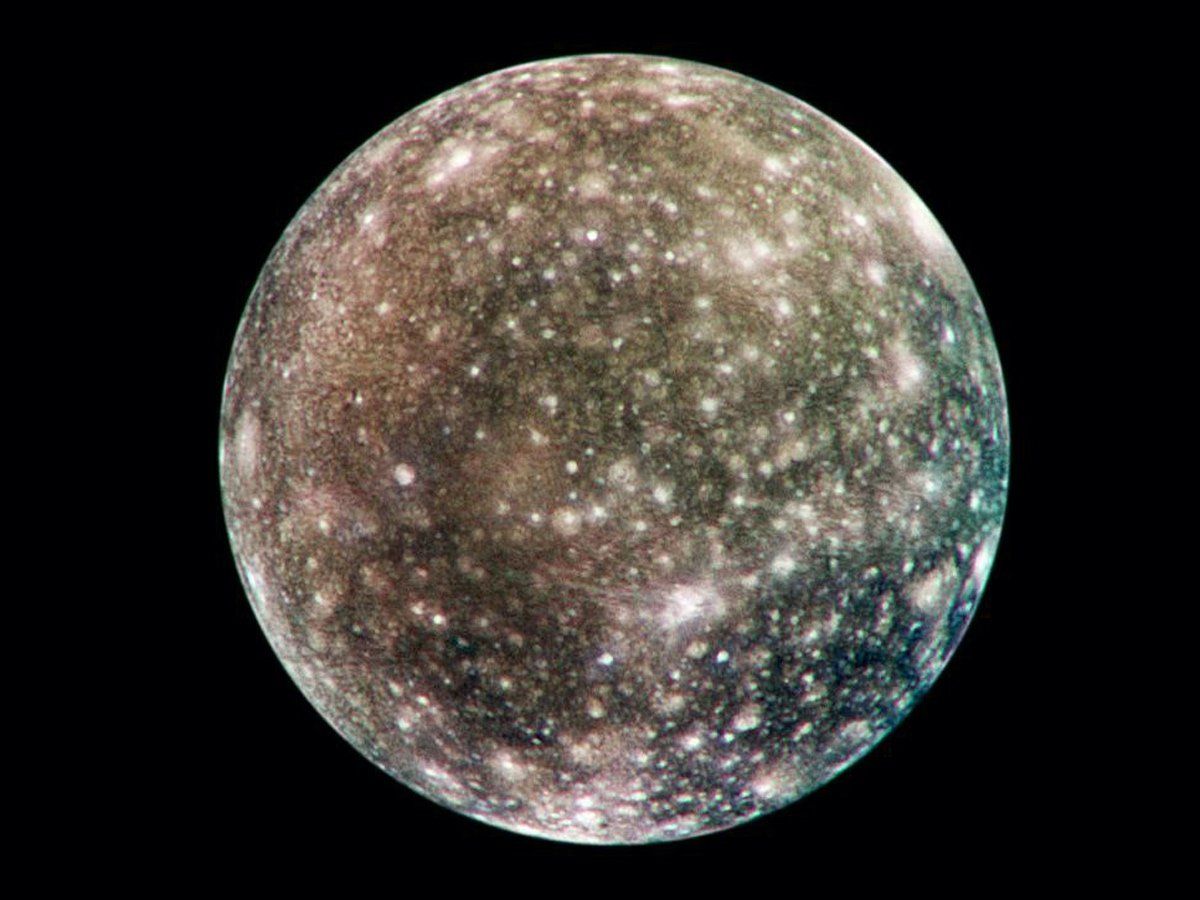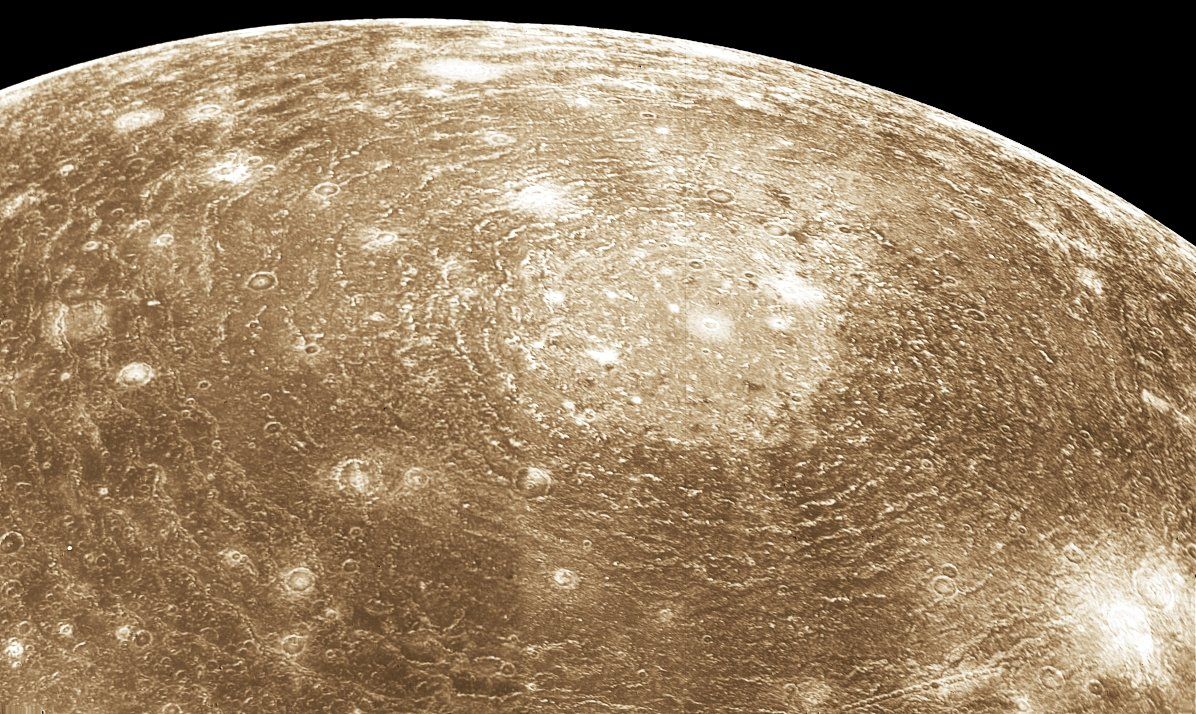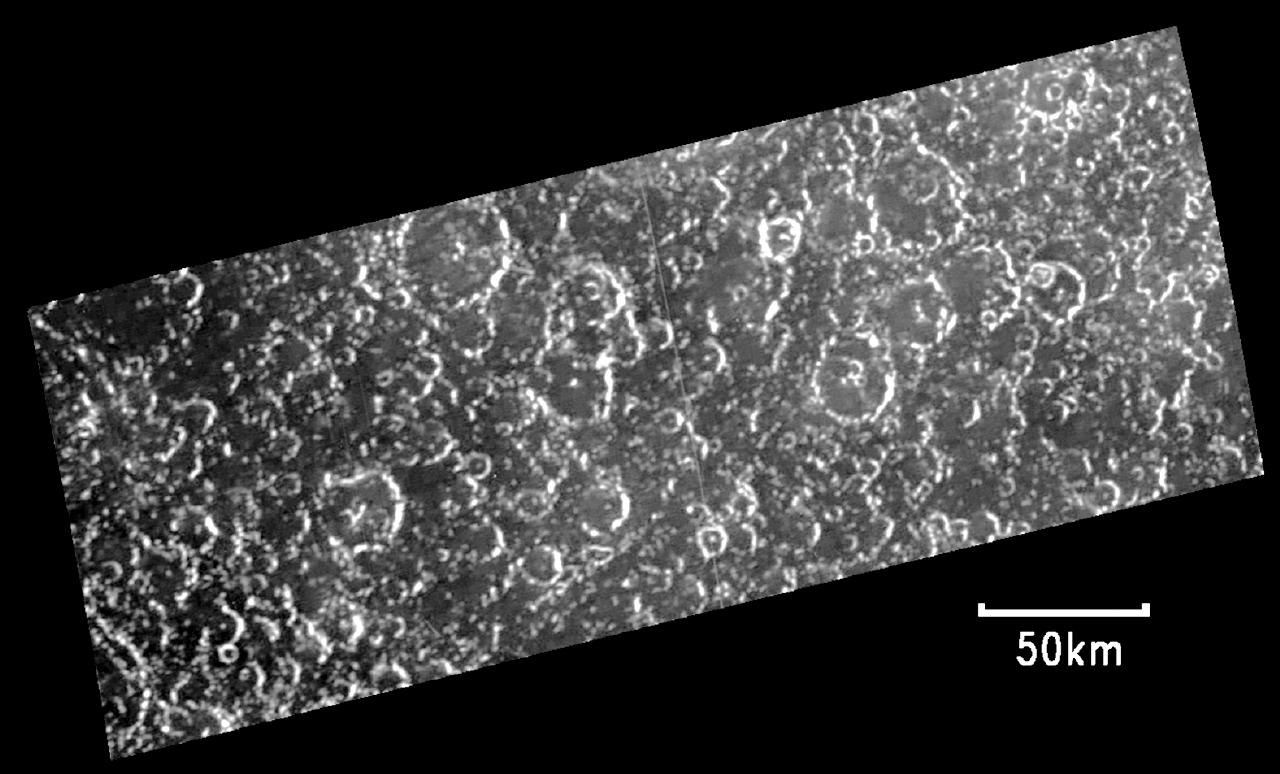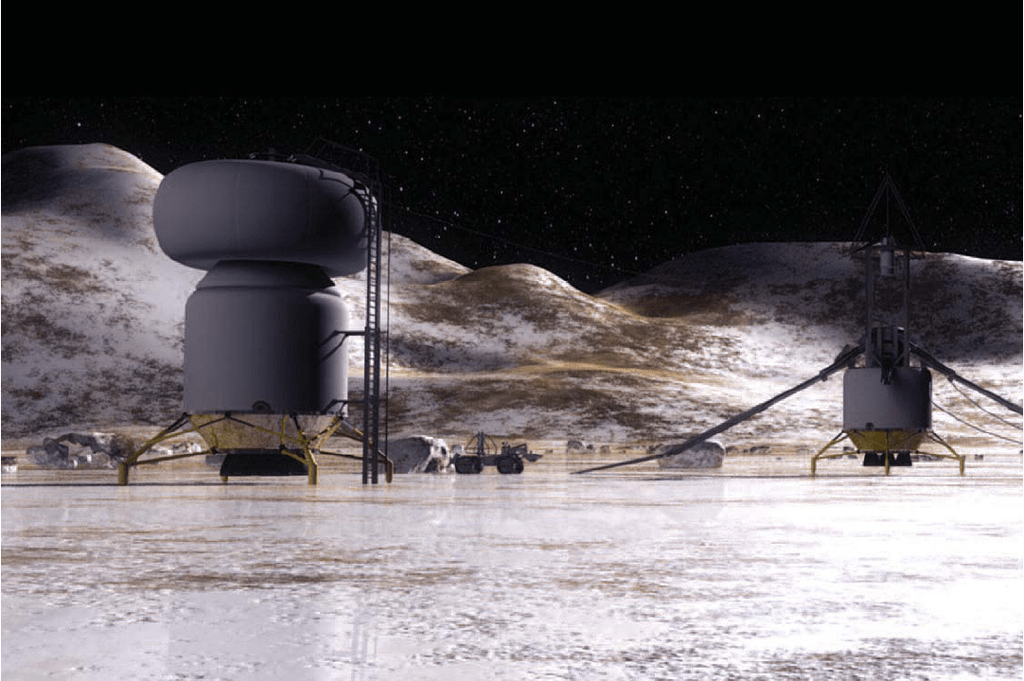This web page is created within BALTICS project funded from the European Union’s Horizon2020 Research and Innovation Programme under grant agreement No.692257.
Callisto
Callisto is Jupiter’s second-largest moon and the third-largest moon known in the Solar System. Only Jupiter’s moon Ganymede and Saturn’s moon Titan surpass it in size. Callisto has a diameter of about 4,800 km.
Callisto orbits 1.9 million km from Jupiter, beyond Jupiter’s radiation belts.
This means not only that there is much less radiation on its surface than on the other Galilean moons, but also that Callisto is not significantly affected by the tidal forces that heat the interior of the other large moons.
Callisto completes an orbit of Jupiter every 16.7 days.
As with the other Galilean moons, the same side of Callisto always faces Jupiter.
This moon’s surface is covered with numerous craters. There has been no geological activity for a long time, which is why Callisto’s surface is considered to be one of the oldest in the Solar System. Valhalla is the largest impact crater on Callisto. It has a diameter of 3,800 km. The second largest impact crater is Asgard (1,600 km). The impact craters have a central region surrounded by a system similar to a multi-ring formation.
Craters and related formations are practically all that can be found on the surface of Callisto. There are no mountains, no volcanoes, and no formations related to other geological processes that have occurred on the moon.
Callisto is also the darkest of all Galileo’s moons. It reflects about 20% of the light that falls on its surface.
Callisto has the lowest density of all Galileo’s moons. Its central part is composed of a mixture of ice and solid rock, probably overlain by a layer of liquid water, 50 to 200 km thick, which in turn is covered by an ice crust up to 200 km thick. Callisto’s core is most likely about 600 km large and made of silicate rocks.
This moon also has its own tiny atmosphere. It is made of carbon dioxide. The atmosphere is constantly renewed by the melting of carbon dioxide ice from Callisto’s crust.
Callisto was discovered along with the other Galilean moons in January 1610. It was originally called Jupiter IV, but in the 1800s it was named Callisto, the name which represents one of the virgins seduced by the ancient Greek god Zeus (Roman Jupiter).
In 2003, NASA conducted a conceptual study to outline the possible exploration of the outer planets by sending humans there. At that time, Callisto was considered to be the most suitable place for such a base, which would serve as an way station for further flights. On the surface of Callisto, a human would receive the lowest radiation dose (0.1 mSv), and it is geologically stable.























